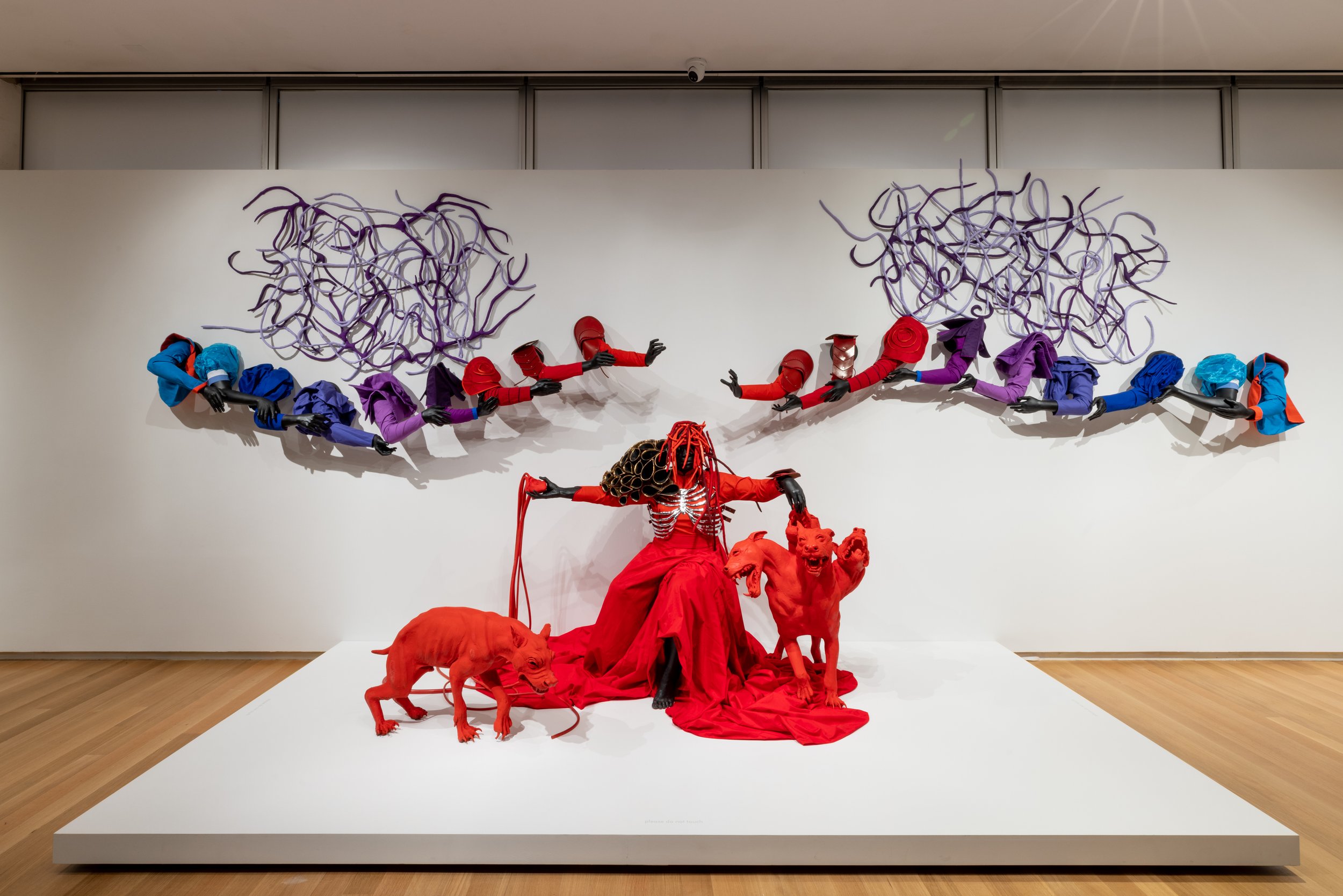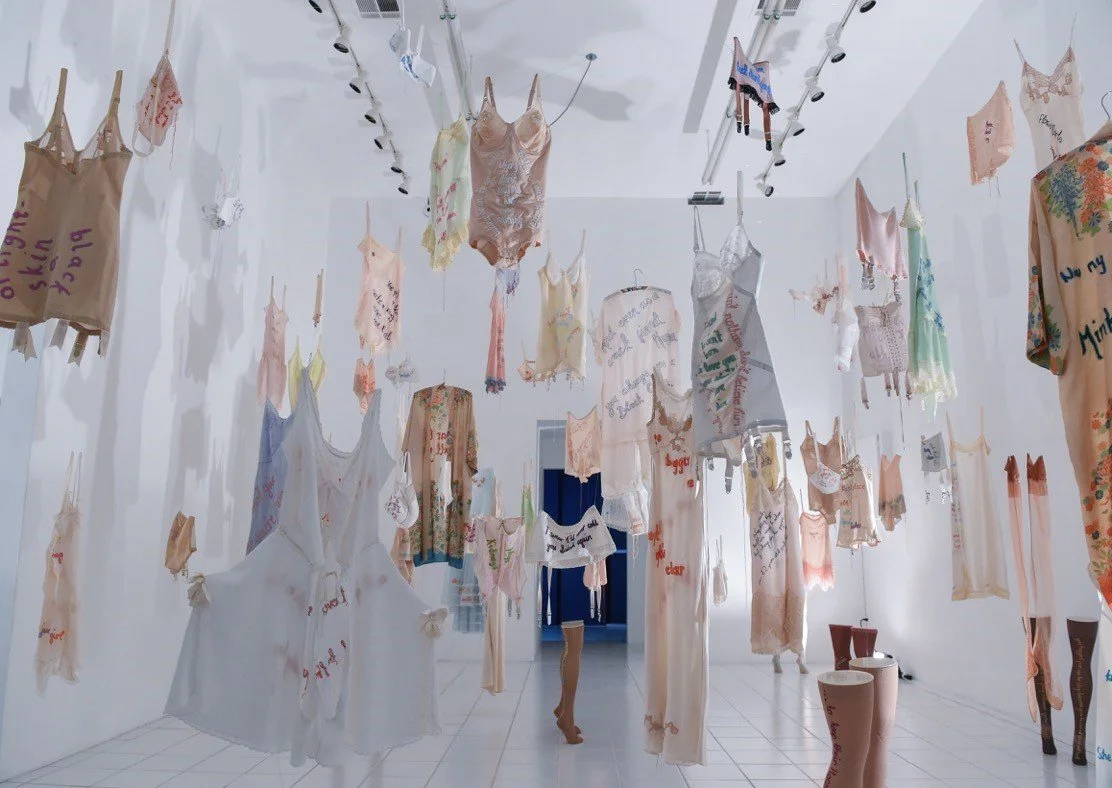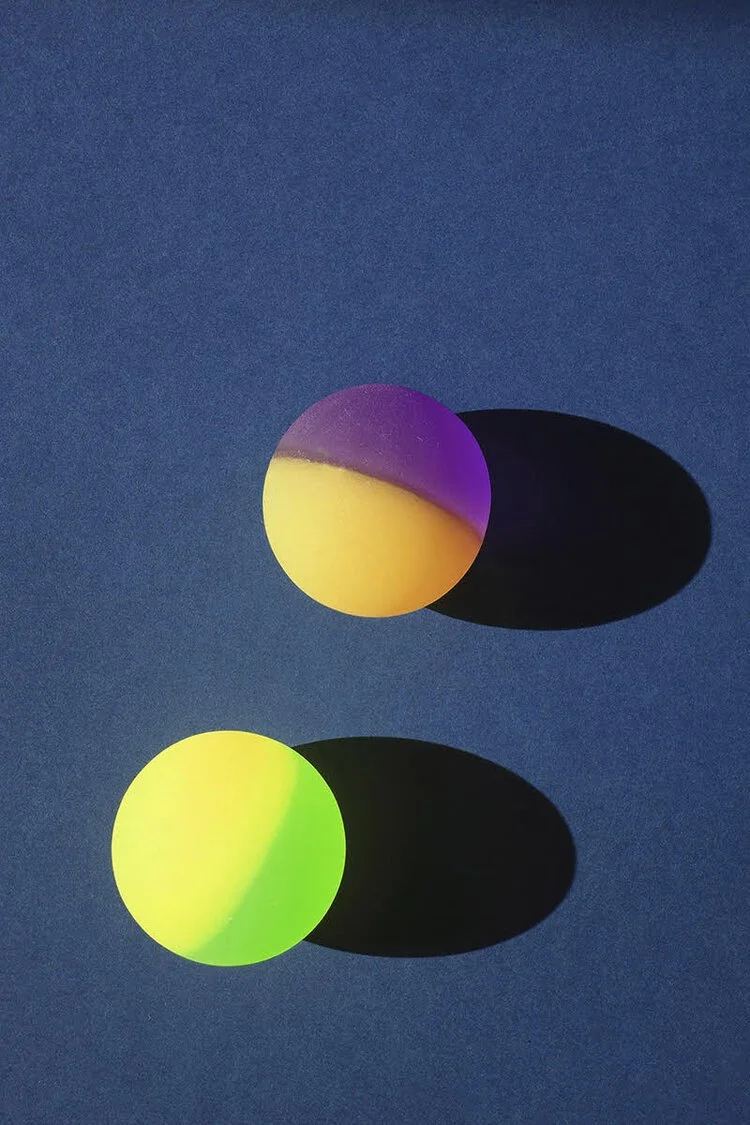Garmenting: Costume as Contemporary Art
The Domba Dance, 2019. Life-size fiberglass, bronze, cotton, and silicone, 157 1/2 × 98 × 118 1/8 in. (400.1 × 248.9 × 300 cm).
Written by Katie Grierson
Copy Edited by Jana Massoud
The first global survey of garmenting is now on display at the Museum of Arts and Design. Garmenting: Costume as Contemporary Art offers an introduction to the art of garmenting, which utilizes clothing as a medium for sculpture, installation, and performance. However, the term garmenting has a hazy conception; speaking to Women’s Wear Daily, even guest curator Alexandra Schwartz isn’t exactly sure where “garmenting” comes from, stating she heard it first from the artist at a solo show: “She wasn’t sure exactly where it came from, either. She uses it to talk about her work. When we were talking about a title for the [MAD] show, I asked her if it would be OK if we used her term. She said sure…It works quite well to describe this phenomenon.”
Installation view of Garmenting: Costume as Contemporary Art at the Museum of Arts and Design, New York (March 12, 2022 to August 14, 2022). Photo by Jenna Bascom; courtesy the Museum of Arts and Design
Garmenting truly is a phenomenon. Traversing between fashion and performance, it came about around the 1960’s when garments in installations would also function as costumes in performances. In the 1990’s, it grew alongside the rise of globalization as artists explored more complex and interconnected themes. In an interconnected world where identities become increasingly blurred and spheres - once distinct and separated - now merge, garmenting acts a way for these artists to express a breakdown in boundaries. Stretching across two floors of the museum, the exhibition is split into five themes: functionality, gender, activism, cultural difference, and performance. Each of these five themes explored by the thirty-five established and emerging artists engage in conversation about traditionalism and hybridization, and often, intersect and are indistinguishable.
The Ghost of Eliza Jumel, 2015. Fiberglass mannequin, Dutch wax–printed cotton textile, and steel plate, 57 7/16 × 71 5/8 × 40 15/16 in. (146 × 182 × 104 cm). Courtesy James Cohan, New York. © Yinka Shonibare CBE. All Rights Reserved, DACS/Artists Rights Society (ARS), New York 2021. Photo: Stephen White
The work on display is not only visually impressive, but also seeped in meaning. Devan Shimoyama’s garment work, February II, 2019, is a cotton hoodie adorned with silk flowers, rhinestones, sequins, jewelry, and an embroidered
patch that functions as an elegy for Trayvon Martin. For Shimoyama, garmenting allows him to pay tribute to Trayvon without having to depict the trauma inflicted upon him. “The first iteration of the hoodie that I made and showed was in 2017. It was all black using sequins, beads, feathers and velvet,” Shimoyama told Kavi Gupta gallery about his Hoodie series, “I initially leaned towards making it because I wanted to find new ways of paying homage to the many black lives taken through police brutality while still reminding people that this persists, and action must be taken. I didn't want to make paintings illustrating any of the related violence, as images of black men in pain were so triggering and already heavily present in the news and media.” A young Yu is one of the five performing artists who will present throughout the exhibition's run. Yu tackles representing Koreon culture, folklore, and spiritual practices, while purposefully remaining unfaithful to the historical reality and allowing them to be reimagined through art: “My work aims to transgress older traditions, regenerating them within queer, diasporic contexts.”
Installation view of Every Curve, 2016. Papillion Art, Los Angeles, CA. Courtesy the artist.
Cloth and art intersect in Garmenting: Costume as Contemporary Art, along with the worlds and identities portrayed through the pieces in the exhibition. Even with globalization at the core of this survey, our clothing and our connection to it brings us into the exhibit. Clothing is how we portray and express ourselves, how we engage with our culture or our gender, and is a symbol of protection, expression, and our own identity. As the artists explore their garments in the context of the changing world around them, we are forced to step into our jeans and examine our relationship with them.
Garmenting: Costuming as Contemporary Art will be on view March 12 through August 14 at the Museum of Arts and Design.











